Earliest Australians enjoyed a coastal lifestyle
Part of the land inhabited by some of the early Australians is now submerged, but details of their life is now revealed in an excavation on an island off the continent’s north-west coast.
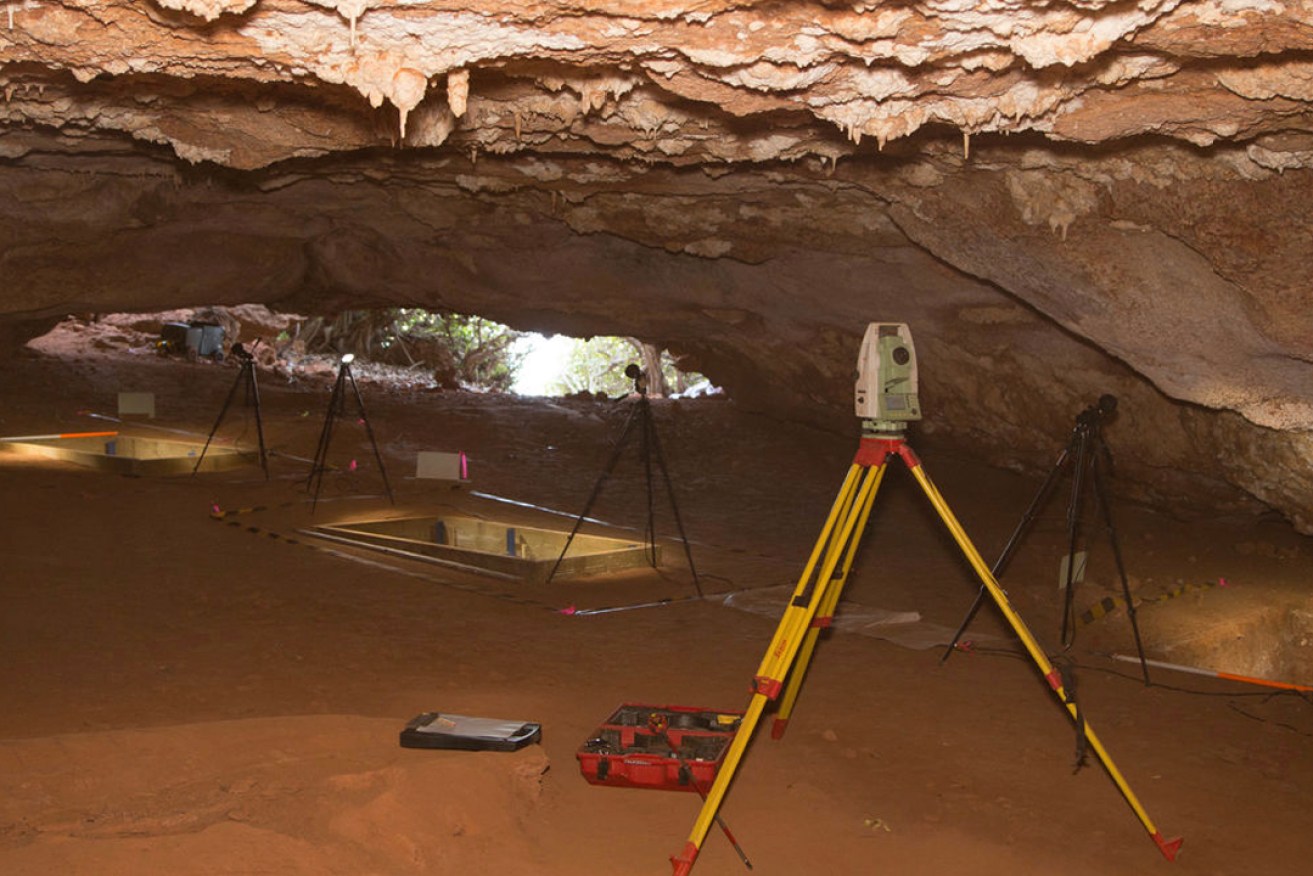
Three main excavation squares within Boodie Cave. Peter Veth, Author provided
Archaeological excavations in a remote island cave off northwest Australia reveal incredible details of the early use by people of the continent’s now-submerged coast.
The latest study reveals that at lower sea levels, this island was used as a hunting shelter between about 50,000 and 30,000 years ago, and then as a residential base for family groups by 8,000 years ago.
As the dates for the first Aboriginal arrival in Australia are pushed back further and further, it is becoming clear how innovative the original colonists must have been.
The earliest known archaeological sites so far reported are found in inland Australia, such as Warratyi rock shelter in the Flinders Ranges and Madjedbebe in Arnhem Land. These places are a long way from the sea, and were once even more so when past sea levels were lower and the coast even more distant.
But we do know that the earliest Australians were originally seafarers. They came from island southeast Asia and no matter which route they followed had to make sea crossings of up to 90km to get here.
The earliest landfall on the continent is now likely to be at least 50m below the present ocean. Until now we have known very little about these first coastal peoples.
Our research, published in Quaternary Science Reviews, begins to fill in some of these gaps.
Over the past 20,000 years sea level has risen 125m, submerging the continental shelves surrounding Australia and separating the mainland from New Guinea and Tasmania.
Our findings provide a unique window into the now-drowned Northwest Shelf of Australia.
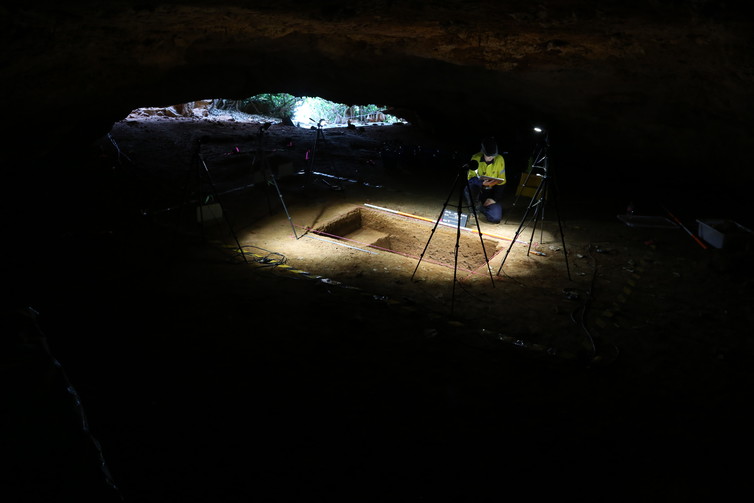
PhD student Fiona Hook at the Boodie Cave excavation. Kane Ditchfield
Boodie Cave provides the earliest evidence for coastal living in Australia and gives us an indication that coastal resources have been important to people since initial colonisation.
Nearly one-third of Australia’s landmass was drowned after the last ice age and along with it evidence for coastal use by some of the earliest Australians.
Thousands of archaeological sites have been recorded on the continental shelves of Europe, Asia and the Americas, but no submerged prehistoric sites have been reported anywhere off Australia.
These submerged landscapes of Australia open up an entirely new frontier of archaeological research and will shed even further light on the lives of the first people to arrive on Australian shores.
For the past five years an international team of 30 scientists has been working in collaboration with the Buurabalayji Thalanyji Aboriginal Corporation and Kuruma Marthudunera Aboriginal Corporation on Boodie Cave, a deep limestone cave on the remote Barrow Island, off the Western Australia coast.
Since the initial early dates for Boodie Cave were reported in 2015, our team has been forensically analysing the archaeological and palaeoenvironmental remains, as well as re-dating the site to build up a robust picture of the lives of the people who lived here.
The results from radiocarbon and optically stimulated luminescence dating techniques from four independent dating laboratories show that Boodie Cave was first occupied between 51,100 and 46,200 years ago.
These dates make Boodie Cave one of the earliest known locations in the settlement of Australia and the earliest site anywhere near the coast.
When Boodie Cave was first occupied, Barrow Island was part of the mainland, with the shoreline between 10km and 20km further west.
The shoreline became even more distant as the planet moved into an ice age and sea levels dropped to 125m below present, around 20,000 years ago. Shortly thereafter global temperatures warmed and, as the ice melted, sea levels rose quickly.
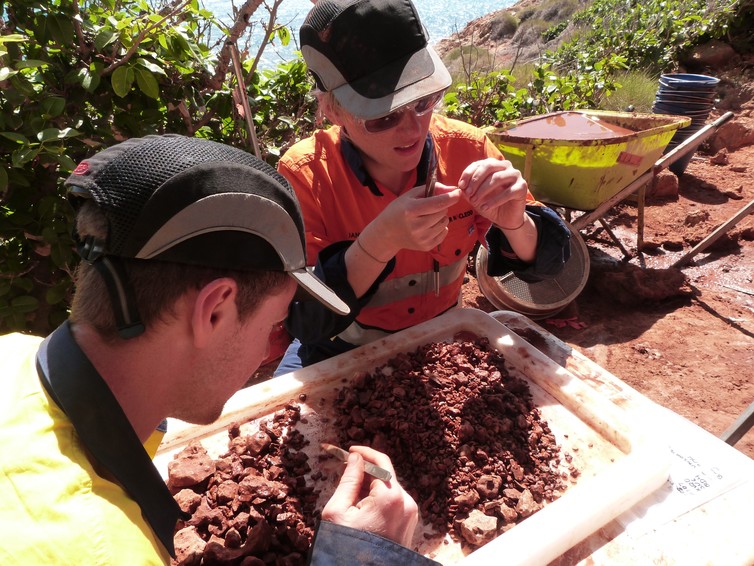
PhD students Jane Skippington and Kane Ditchfield sorting material excavated from Boodie Cave. Bob Sheppard
Throughout this long period people returned again and again to Boodie Cave. The limestone that forms the cave provides ideal conditions for preservation, giving us incredible details about the people who lived there.
The cave contains one of Australia’s longest dietary records. These animal remains provide us with profound insights into what people were hunting and collecting from initial settlement onwards, and how they adapted to a new and ever-changing arid landscape.
Besides wallabies, kangaroos and other terrestrial animals, the archaeological deposits contain marine shells transported from the distant coast.
In the deepest levels, when the shoreline was 20km or so distant, there are only four different types of shellfish that we have directly radiocarbon dated to 42,300 years ago. These shells represent the first direct evidence of marine resource use in Australia, and some of the earliest in our region.
With rising sea levels the coastline came closer to the cave and the number and variety of marine resources increased exponentially.
By 8,000 years ago, there are 40 different types of marine shells as well as exceptionally well-preserved remains of sea urchin, mud crab, reef fish, marine turtle, marine mammal and a variety of small and medium-sized terrestrial animals.
By 6,800 years ago the cave and the whole island was abandoned as rising sea levels finally cut it off from the mainland.
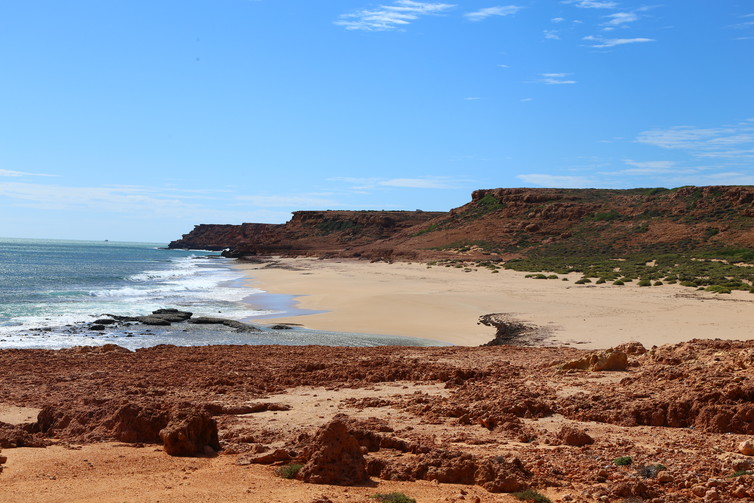
Boodie Cave is located on the second bluff in the centre of the photograph. Kane Ditchfield
We argue that Boodie Cave was used as an inland hunting shelter between about 50,000 and 30,000 years ago before becoming a residential base for family groups by 8,000 years ago.
Dietary remains in addition to shell artefacts, incised shells, shell beads and thousands of stone artefacts show that Boodie Cave was a frequently visited location on the landscape.
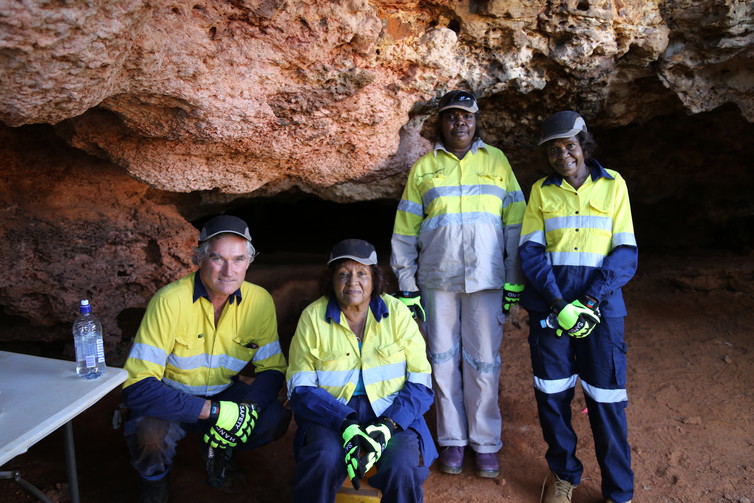
Peter Veth (left) with Thalanyi elders Anne Hayes, Roslyn Davison and Jane Hyland at Boodie Cave on Barrow Island. Peter Veth
Our study clearly shows that not only were Aboriginal people continuing to use marine resources across a period of dramatic environmental change, but they were also exploiting a range of desert resources. This demonstrates a successful adaptation to both the coasts and deserts of northern Australia.
Recent genetic studies suggest that colonisation was coastal, with people rapidly moving around the east and west coasts of Australia before meeting up in modern South Australia.
But the coasts along which the earliest Australians traversed were very different to today’s, not only in terms of ecology but also in distance. In some places the earlier coastline would have been hundreds of kilometres from its present position.
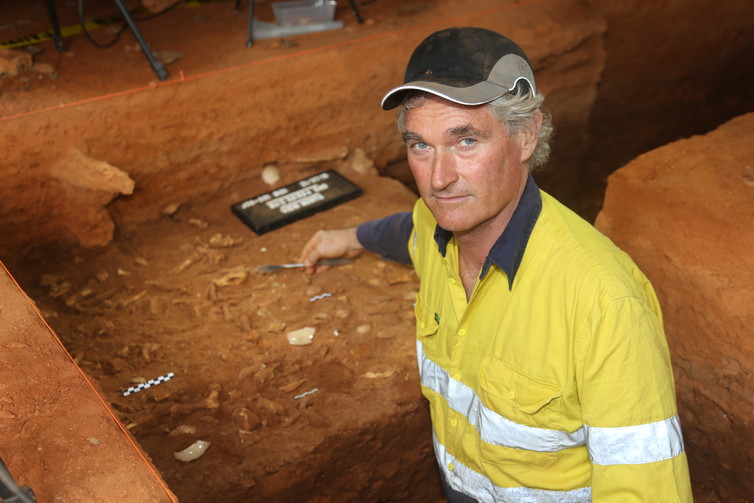
Lead archaeologist Peter Veth excavating a rich layer of dietary remains and artefacts below the surface of Boodie Cave. Kane Ditchfield
Flinders University is currently leading the first Australian Research Council-funded project on submerged prehistoric landscapes in Australia, called Deep History of Sea Country.
The Conversation article, by Peter Veth (University of Western Australia), Ingrid Ward (Flinders University), Sean Ulm (James Cook University) and Tiina Manne (University of Queensland) can be read here . Flinders postdoctoral research fellow Dr Ingrid Ward is now working on the Deep History of Sea Country project.





